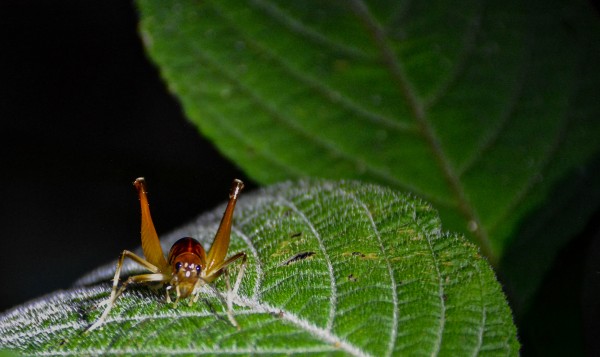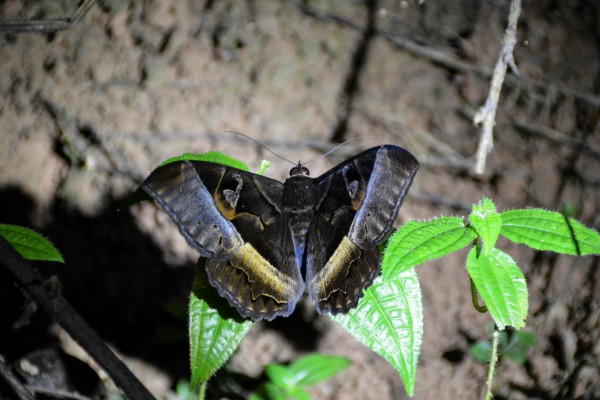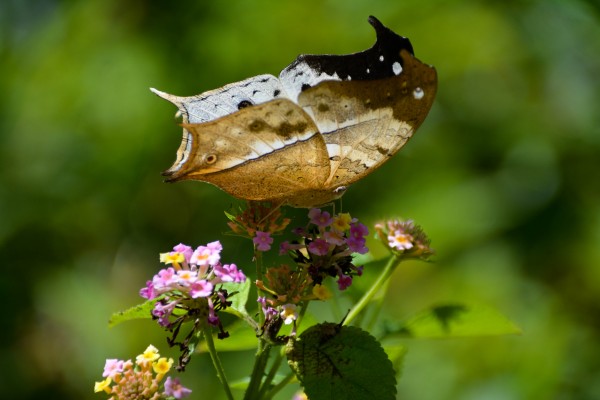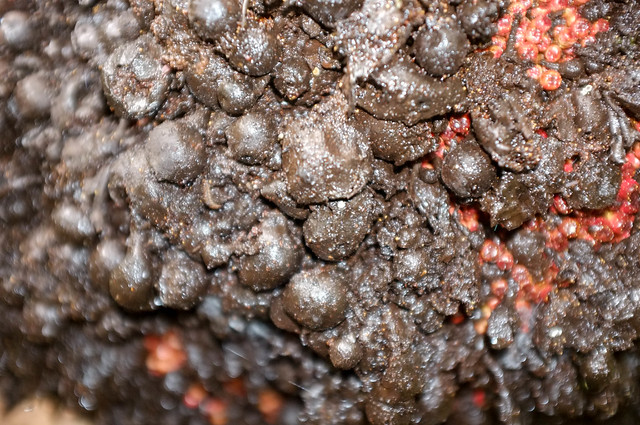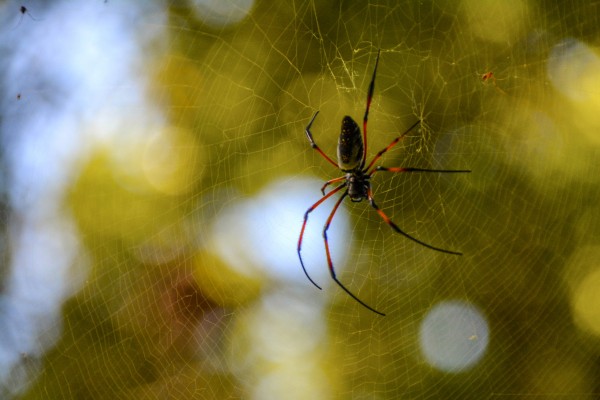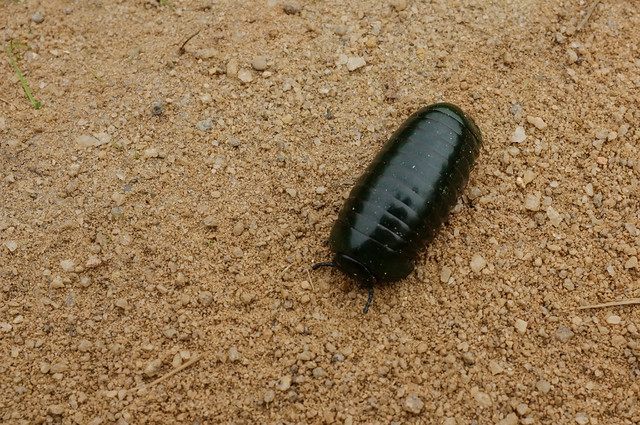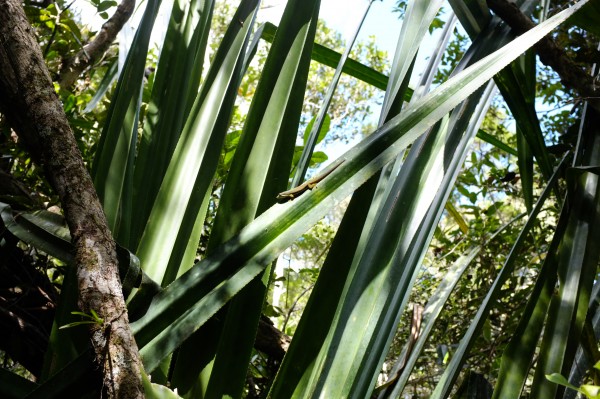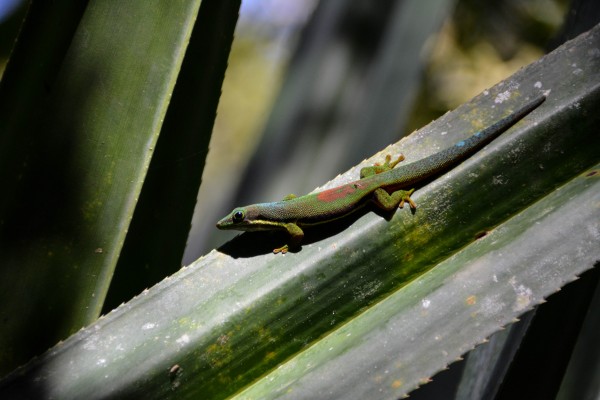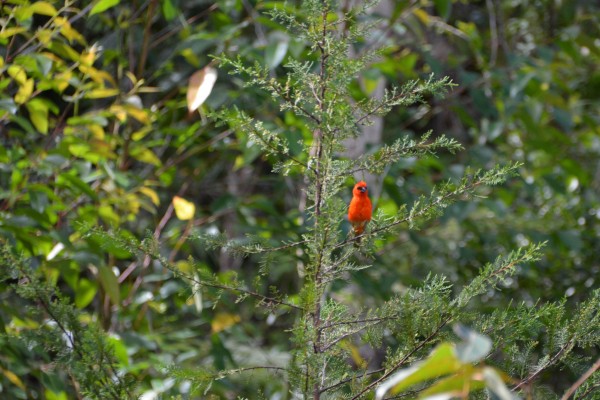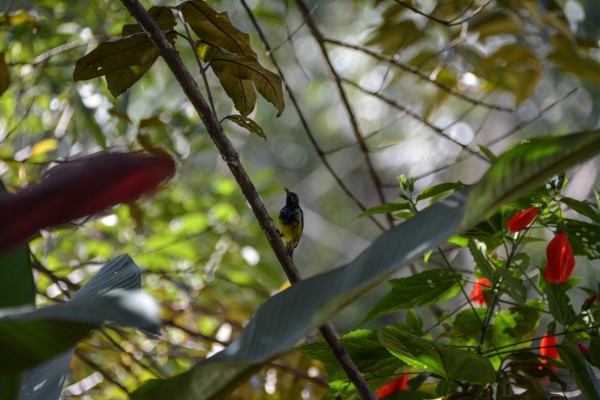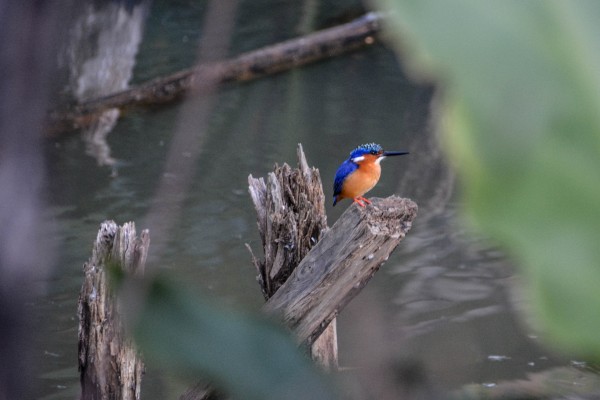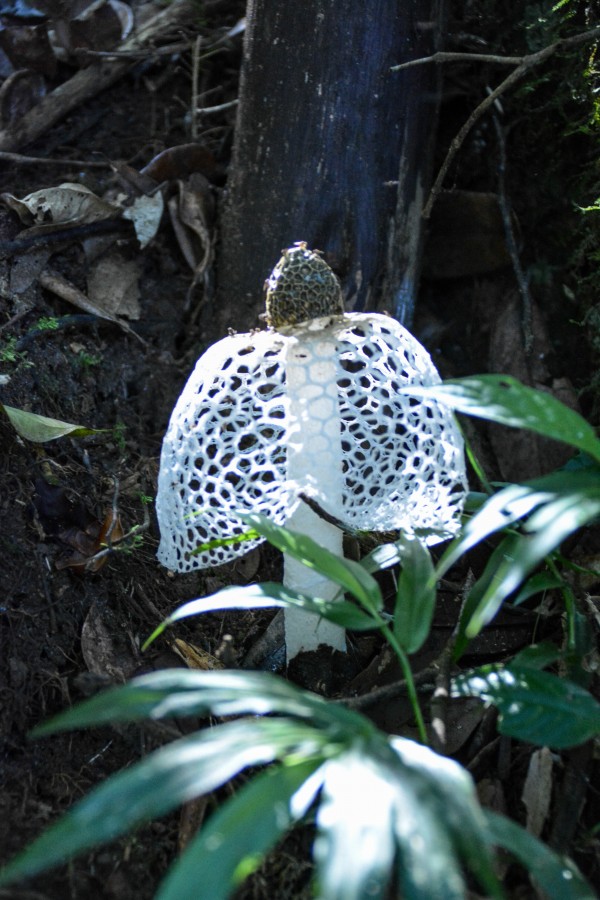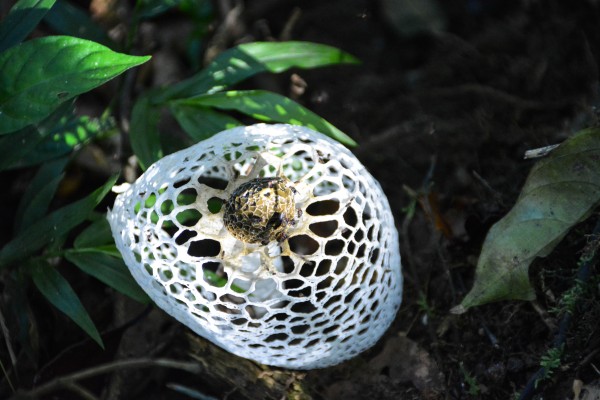
Walking through the jungle in Madagascar in search of lemurs, it’s easy to overlook the little things…and trample them underfoot. Bugs, tiny plants, lizards. There are upwards of 100,000 species of insects in Madagascar. We didn’t see the long-necked giraffe weevil, but we saw lots of other interesting creepy crawlies. For instance, this little guy, perched on the door of our hotel room. Twice. I don’t know if it’s a moth or what…
Some other numbers to put it in perspective: 80 species of stick insects. 100 species of cockroaches. 235 species of mosquito. And the world’s smallest bee, at 2 mm in length.
4 following photos by Anne
The butterfly above is one of the few critters I was able to identify. It looks like a leaf with its wings closed, complete with the central vein, and when it opens its wings, they are bright white with black spots. It’s the clouded mother of pearl, Protogoniomorpha anacardii, which occurs all over Africa.
Our guide also showed us a number of termite nests, which are built on the ground, and ant nests, which are attached to trees and can be as large as two to three feet in diameter. And so I saw this one – I didn’t see a single ant – but I found the nest to be….grotesque
And then there were the spiders. Below is what I think is a type of “orb spider.”
And there were LOTS of spiders. Crossing a footbridge, it is not uncommon to see that spiders have somehow strung their webs across the span between trees on opposite banks. Some of them were pretty creepy looking spiders.
Besides insects and arachnids, madagascar has a variety of pill millipedes (Sphaerotherium). I learned about them as we were driving up the rutted dirt road to Mantadia National Park, the driver suddenly slammed on the brakes and indicated there was something in the road. I jumped out and there were a good two-dozen copper-green bugs that resembled two-inch giant roly-poly bugs. Only they are millipedes that can roll up into a ball.
After snapping a couple of photos I had to spend a couple of minutes clearing them from the road so that they wouldn’t be crushed by the passing vehicle. I wondered if the driver thought I was foolish, but when I got in, he said, “Thank you.”
There are some 260 species of reptiles in Madagascar, in just a few types – between 40 to 60 percent of the world’s chameleon species, a handful of tortoises, a bunch of geckos. About 90 percent of the reptiles in Madagascar occur nowhere else. One was the lined day gecko, phelsuma lineata lineata. In Andasibe’s nature reserve, there were these plants that looked like agaves, but grew as tall as small trees, and each one seemed to have its own lined day gecko.
And then there are the birds. Madagascar has about 280 species of birds, 100 of which are endemic. Not as high a percentage as some of the other animal types – but birds do get around, what with wings and all! I wanted to share a few of the bird photos Anne managed to grab. The first is a red fody or Madagascar fody (Foudia madagascariensis); some sort of sunbird, and the Madagascar kingfisher (Corythornis vintsioides). I remember the guide getting particularly excited when we saw a Madagascan green pigeon, saying that birders come for a week on end to try and spot this bird; as well as the nuthatch vanga. We saw both but didn’t get any good photos.
Finally, it’s not just the fauna that are so interesting in Madagascar – it’s also plants…and fungi!
Given that between 9,000 and 12,000 plant species occur only in Madagascar, we were keenly aware of the likelihood that we were seeing the plants all around us for the very first time. Which seemed weird, but then again plants generally look pretty much the same. As do mushrooms, right?
But in one of our hikes we ran into a particular fungus which caught our attention. It’s not endemic to Madagascar, but it’s weird.
At the bottom of a stairway carved into one of the hills was this odd, 10-inch-tall mushroom with a delicate white, veil-like lattice cap, topped with a brown knob that had the full attention of about a dozen flies. This is the phallus indusiatus, or “stinkhorn fungus.” They grow in tropical areas all over the world, but are interesting to see because they emerge from a small egg-shaped fungus in the ground, grow to the form in the photo, and then disappear back into the ground, all in the space of about 12 hours.
One of many interesting things about this fungus is that the brown tip gives off the odor of rotting flesh, which attracts flies, which in turn aid in dispersing the spores. The whole family apparently has this characteristic. But interestingly, one of the close cousins of this fungus, found in Hawaii, has been identified as causing a spontaneous orgasm in 6 of 16 women who sniffed the odd mushroom! We didn’t have the opportunity to test whether this is the case for this particular pungent cousin. And despite its odd appearance, it seems that these are regularly dried and eaten in some markets…not something I would have guessed.
If you’d like to see mor photos of Madagascar, including life forms both great and small, you can refer to this Flickr album.


